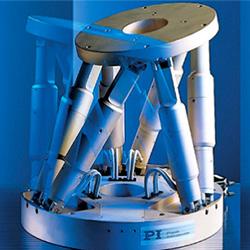ZEISS enhances efficiency in multi-scale and multi-modal workflows
Materials and Life Science researchers can now experience faster accessibility of deeper regions of interest when investigating samples in 3D. With the new extensions on ZEISS Crossbeam 350/550 and ZEISS Atlas 5, users benefit from improvements in speed and data quality when performing multi-scale, multi-modal studies in additive manufacturing, electronics, battery research, biomaterials and biological tissue investigations on resin-embedded biological specimens.
JENA/Germany
Access of deeply buried structures and rapid fabrication of objects
Researchers who perform multi-scale, correlative studies using X-ray microscopy data to drive FIB-SEM site selections today can further enhance their workflows: the newly introduced, patented LaserFIB on ZEISS Crossbeam 350/550 enables the access of deeply buried structures in addition to rapid, gallium free structure fabrication over large length scales. Users can perform laser work in a dedicated chamber to avoid contamination of the main instrument. A next generation femtosecond laser added to the airlock provides massive material ablation in a short time while virtually eliminating laser-induced heat effects. The new tool is up to 50 times faster for large volume removal than equivalent workflows using a plasma ion source. The LaserFIB can be used to produce structures such as cantilevers, pillars for nanomechanical testing and for sample preparation in the ZEISS Xradia Ultra X-ray microscope. Further applications are the creation of large cross sections for EBSD (electron backscattered diffraction) studies or whole TEM grids with guaranteed gallium free results.
Enhanced Correlative Workflows, Tomography Data Quality and Interactive Data Environment
ZEISS introduces extensions of ZEISS Atlas 5 for imaging, 3D Tomography and a toolkit for analysis and reporting. Enhanced correlative workflows are now included due to improvements in relocation of regions of interest when guiding LaserFIB or FIB-SEM workflows using X-Ray microscopy data. Users can take advantage of relocating regions of interest faster and more accurately. Once a region has been located, thin & fast tomography takes over. This is a method for tomogram acquisition, slice thickness measurement and improved visualization and data processing with ZEISS' patented True-Z technology. True-Z measures each slice thickness in turn and reconstructs the tomogram accounting for variability in z slice thickness. This provides greater accuracy for the final reconstructed volume making 3D and 4D modeling more accurate and increasing precision of segmentation when investigating 3D volumes.
Enhancements to a toolbox in ZEISS Atlas 5 now enable each user to analyze, present and share results more effectively than ever. Correlated data of a multi-modal dataset are visible at one glance with simultaneous visualization of up to four imaging or analytic modalities. Storyboarding, the production of curated slideshows and the possibilities of digital education are facilitated by ZEISS' new Enhanced Browser-Based Viewer Export Module.
These solutions further extend the new paradigm in microscopy advancing sample preparation, tomography analytics and data integrity, introduced by ZEISS earlier this year at M&M 2019, Portland, US.
Press contact
ZEISS Research Microscopy Solutions
Vybhav Sinha
Tel. +49 3641 64 3949
E-Mail: vybhav.sinha@zeiss.com
www.zeiss.com/newsroom
Featured Product

PI USA - Hexapod for Industrial Alignment
This new compact 6-axis hexapod was designed with 24/7 industrial precision alignment tasks and easy serviceability in mind. It is equipped with absolute encoders (no need for referencing) and motor brakes that automatically engage during a loss of power, for extra safety. Debuting at Photonics West 2025 last month, applications include camera lens alignment, micro assembly, and fiber optical alignment applications.
